-
ORIGINAL ARTICLE12-16-2024
Respectful care for postpartum women with sickle cell disease: a netnographic study
Revista Brasileira de Enfermagem. 2024;77(6):e20230545
Abstract
ORIGINAL ARTICLERespectful care for postpartum women with sickle cell disease: a netnographic study
Revista Brasileira de Enfermagem. 2024;77(6):e20230545
DOI 10.1590/0034-7167-2023-0545
Views1See moreABSTRACT
Objectives:
to analyze principles of respectful maternity care in narratives of postpartum women with sickle cell disease, relating them to Sustainable Development Goals.
Methods:
netnographic study, with two videos published in 2020. Deductive iconographic and thematic analysis by Respectful Maternity Care Charter, organized in MAXQDA.
Results:
principles identified were the right to: freedom from harm and ill-treatment; information, informed consent, refusal of medical procedures, and respect for their choices and preferences including companion; be considered a person from birth, with dignified and respectful treatment; health at the highest possible level; newborns being with their parents or guardians. The Sustainable Development Goals for women by 2030 were not positively contemplated in postpartum women’s experience.
Final Considerations:
it is appropriate that health workers qualify themselves to provide respectful maternity care, with qualified listening, understanding, and resolution of unique demands of postpartum women with sickle cell disease, seeking equality in care for women.
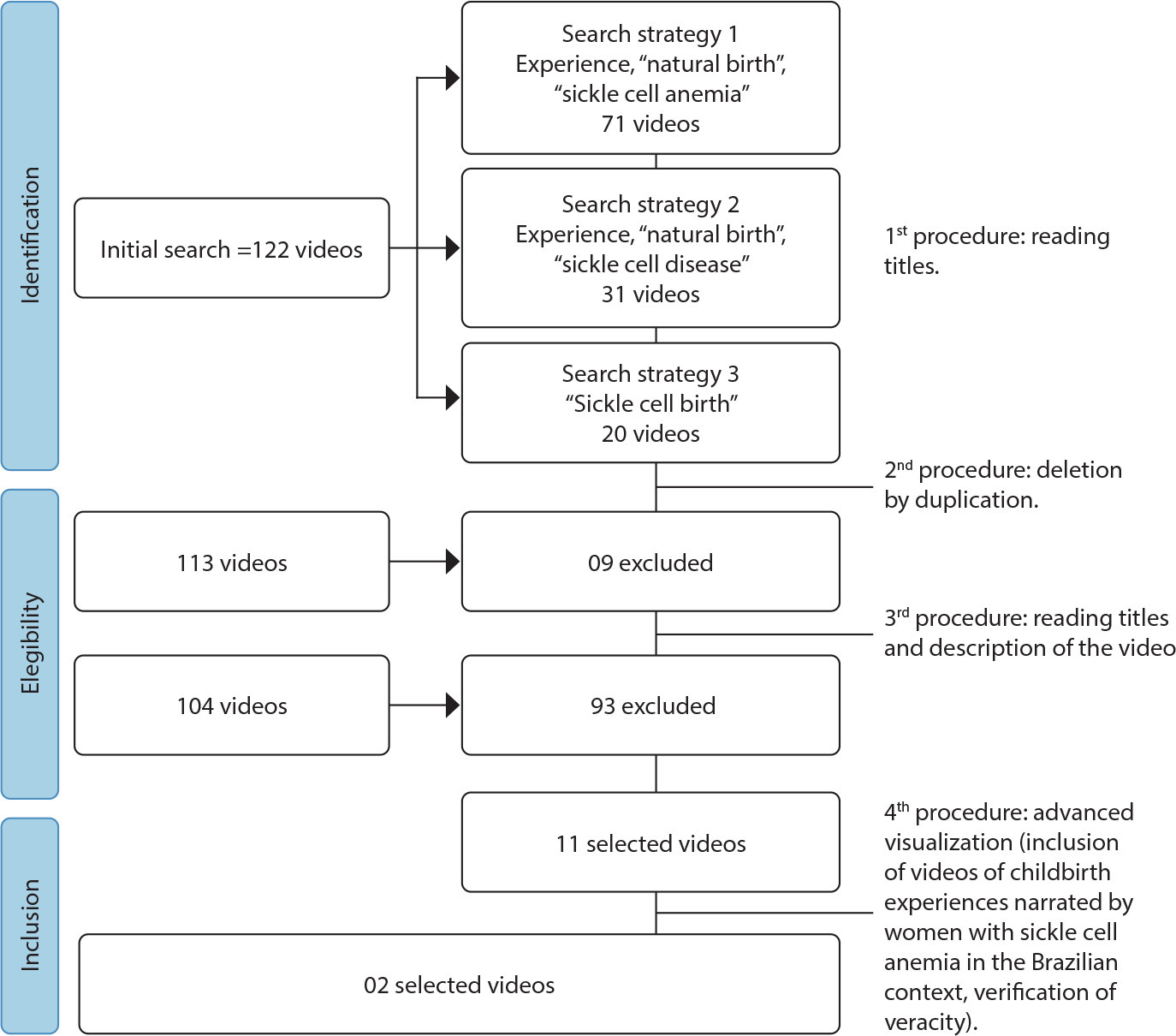
-
12-16-2024
GerenciaDOR™: development of digital technology by nurses for the assessment of patients with chronic pain
Revista Brasileira de Enfermagem. 2024;77(6):e20240050
Abstract
GerenciaDOR™: development of digital technology by nurses for the assessment of patients with chronic pain
Revista Brasileira de Enfermagem. 2024;77(6):e20240050
DOI 10.1590/0034-7167-2024-0050
Views0See moreABSTRACT
Objectives:
to develop a digital technological solution (prototype) for assessing patients with chronic pain.
Methods:
this is a methodological and technological development study based on the Human-Centered Design framework and the principles of Patient-Centered Care. The prototype guides patients through a body diagram and directs them to an evaluation using specific instruments that address the multidimensional aspects of chronic pain.
Results:
the GerenciaDOR* project enables navigation through the Web App screens, providing access to pain assessment features up to the presentation of results.
Final Considerations:
the study describes a systematic approach to pain assessment and expands nurses’ knowledge in pain management. Additionally, it can promote the development of other digital technologies for chronic pain assessment and contribute to a multidisciplinary, patient centered treatment.
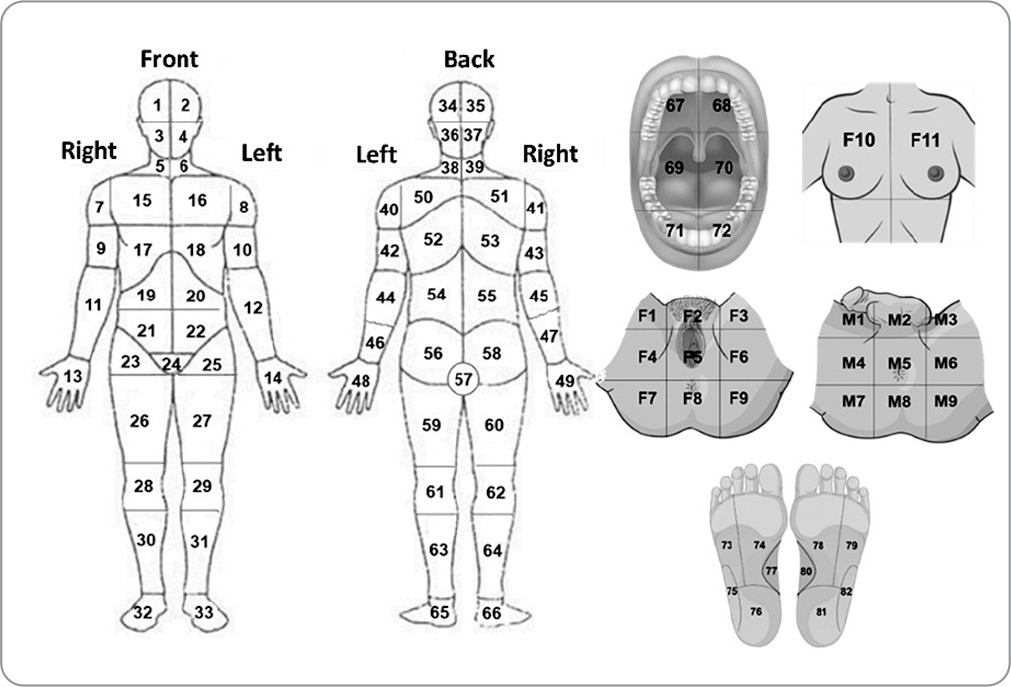
-
ORIGINAL ARTICLE12-16-2024
Psychometric analysis of ProQOL-BR in nursing: building hospital safety and protection
Revista Brasileira de Enfermagem. 2024;77(6):e20240085
Abstract
ORIGINAL ARTICLEPsychometric analysis of ProQOL-BR in nursing: building hospital safety and protection
Revista Brasileira de Enfermagem. 2024;77(6):e20240085
DOI 10.1590/0034-7167-2024-0085
Views0See moreABSTRACT
Objectives:
to analyze the psychometric properties of the ProQOL-BR instrument in hospital nursing professionals.
Methods:
a methodological study to validate the ProQOL-BR. Confirmatory factor analysis, assessment of local and global adjustment quality, Pearson hypothesis testing and Cronbach’s alpha internal consistency analysis were used.
Results:
a total of 490 professionals participated. The model presents adequate quality due to factor weights (λ≥ 0.40), acceptable overall fit quality and adequate chi-square ratio and degrees of freedom (χ2/g.1=2.51) for the parameters of CFI (0.923), GFI (0.902), TLI (0.914) and RMSEA (0.042). In terms of validity, it was shown to be adequate with CC=0.89. The internal consistency obtained by standardized Cronbach’s alpha was 0.761. Criterion validity was shown to be favorable with significant correlations (0.001).
Conclusions:
the instrument was validated regarding content, criteria and reliability. Three questions were removed from the original instrument, ProQOL-BR, leaving the final instrument with 25 questions.
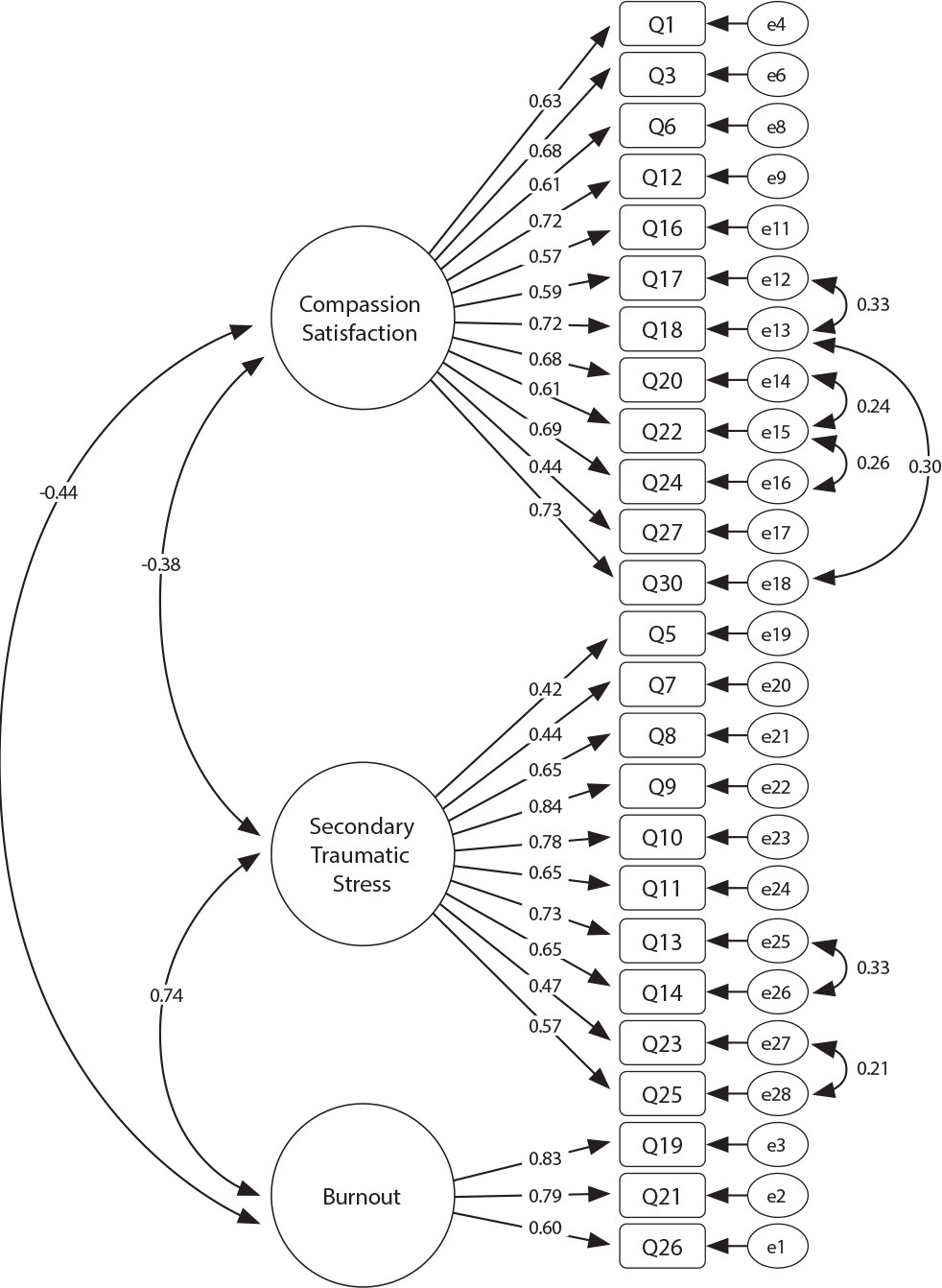
-
REVIEW12-16-2024
Recommendations for guidelines for promoting mental health in the workplace: an umbrella review
Revista Brasileira de Enfermagem. 2024;77(6):e20240086
Abstract
REVIEWRecommendations for guidelines for promoting mental health in the workplace: an umbrella review
Revista Brasileira de Enfermagem. 2024;77(6):e20240086
DOI 10.1590/0034-7167-2024-0086
Views1See moreABSTRACT
Objectives:
to summarize the recommendations of guidelines for promoting mental health in the workplace.
Methods:
an umbrella review, according to Joanna Briggs Institute and Preferred Reporting Items for Systematic reviews and Meta-Analyses methodological assumptions. Data collection was carried out in January 2021 and updated in July 2023 in the American Psychological Association, Cochrane Library, EMBASE, National Library of Medicine, and Scopus databases. Systematic reviews that assessed guidelines with recommendations for mental health care for workers were included. PROSPERO registration CRD42023461845.
Results:
four systematic reviews published between 2015 and 2018 were identified. The abstracts highlighted actions that facilitate and inhibit the recommendations as well as three categories of intervention: primary prevention – worker protection; secondary prevention – promoting workers’ mental health; and tertiary prevention – supporting, monitoring and rehabilitating workers upon returning to work.
Conclusions:
the interventions are based on prevention, promotion and early recognition, support and rehabilitation of mental health problems.
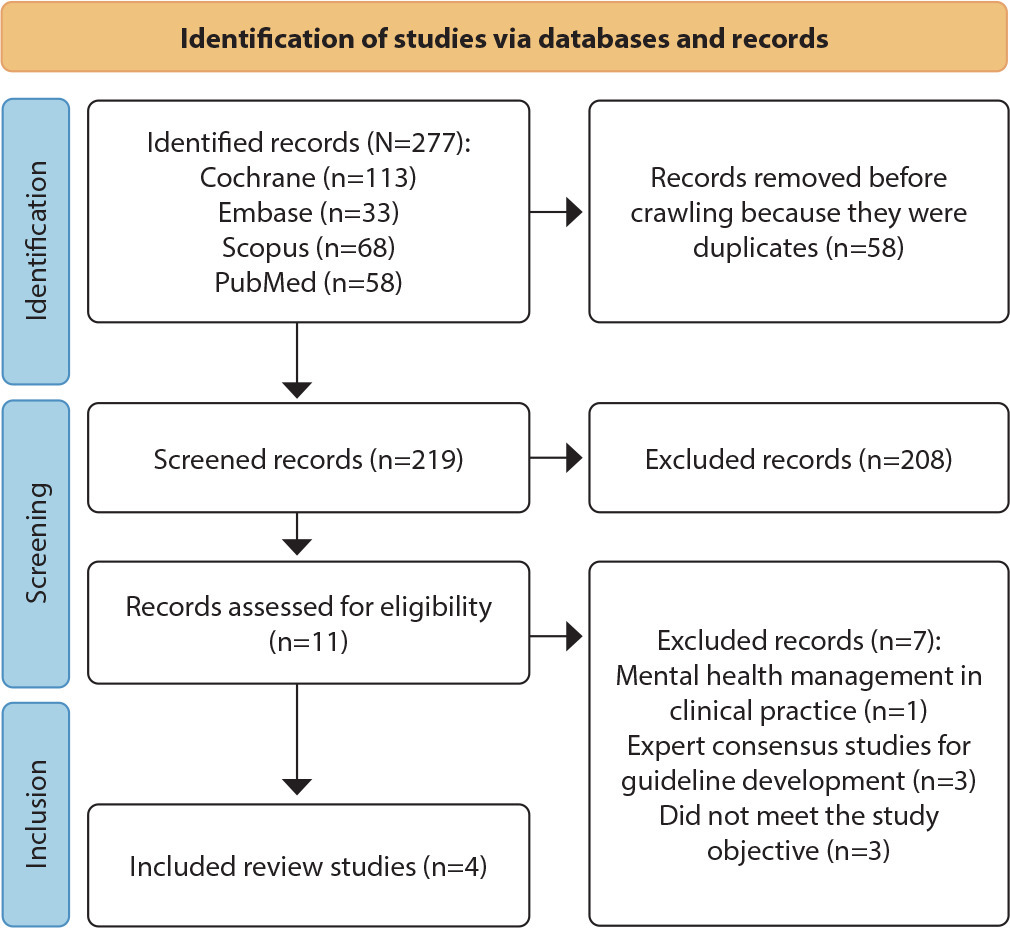
-
ORIGINAL ARTICLE12-16-2024
Analysis of omission of antimicrobial doses in Intensive Care Units
Revista Brasileira de Enfermagem. 2024;77(6):e20240102
Abstract
ORIGINAL ARTICLEAnalysis of omission of antimicrobial doses in Intensive Care Units
Revista Brasileira de Enfermagem. 2024;77(6):e20240102
DOI 10.1590/0034-7167-2024-0102
Views0See moreABSTRACT
Objectives:
to analyze the rate of antimicrobial dose omission in intensive care units.
Methods:
cross-sectional study carried out between March 1 and September 30, 2023, in intensive care units of a University Hospital in Rio de Janeiro.
Results:
the sample consisted of 452 prescriptions and 1467 antimicrobial doses. The dose omission rate was 4.29%. Each antimicrobial prescribed increased the chance of omission by 51%. The strategy of double-checking prescriptions helped prevent 30% of antimicrobial dose omissions (p=0.0001).
Conclusions:
monitoring the omission of antimicrobial doses can guide nursing actions to improve quality and patient safety, contributing to the prevention of medication errors, antimicrobial stewardship and the fight against antimicrobial resistance.
-
ORIGINAL ARTICLE12-16-2024
Health literacy development of Primary Health Care patients: qualitative research
Revista Brasileira de Enfermagem. 2024;77(6):e20240154
Abstract
ORIGINAL ARTICLEHealth literacy development of Primary Health Care patients: qualitative research
Revista Brasileira de Enfermagem. 2024;77(6):e20240154
DOI 10.1590/0034-7167-2024-0154
Views0See moreABSTRACT
Objectives:
to identify the process of health literacy development among primary care patients, relating it to their self-care practices.
Methods:
qualitative, prospective research with 22 patients from two Family Health Strategy units. Data were obtained through individual semi-structured interviews, examined through descriptive statistics and thematic content analysis.
Results:
the results discuss how participants learn about health and how this resonates in their behaviors, culminating in two thematic categories: “Health knowledge construction”; and “Dialogue between health knowledge construction and patient care actions”.
Final Considerations:
health knowledge is developed mainly through interpersonal relationships, mediated by health professionals through bonding and communication. Community educational actions and training of health professionals in communication can promote health literacy and self-care among patients.
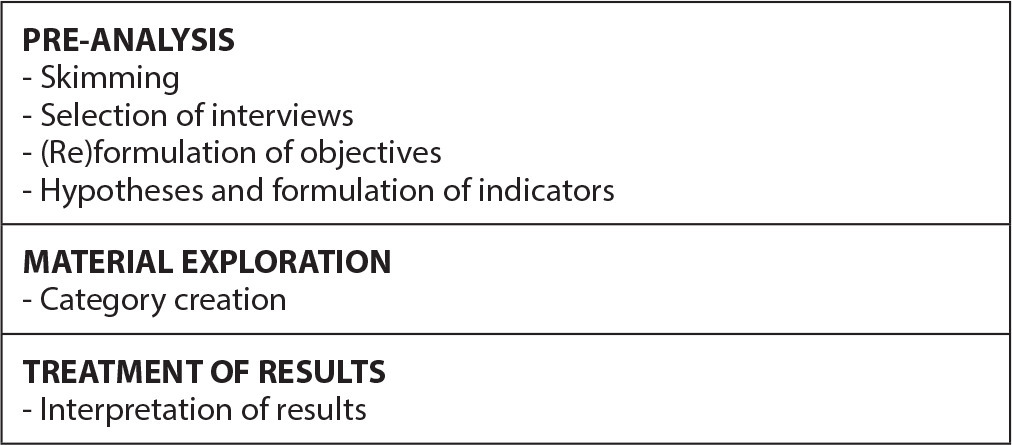
-
ORIGINAL ARTICLE12-16-2024
Bladder ultrasound: evidence of content validity of a checklist for training nurses
Revista Brasileira de Enfermagem. 2024;77(6):e20230183
Abstract
ORIGINAL ARTICLEBladder ultrasound: evidence of content validity of a checklist for training nurses
Revista Brasileira de Enfermagem. 2024;77(6):e20230183
DOI 10.1590/0034-7167-2023-0183
Views0See moreABSTRACT
Objectives:
to develop and analyze evidence of content validity of a checklist for training nurses in measuring bladder volume through ultrasound.
Methods:
a methodological study, consisting of three stages: literature review; instrument item preparation; and analysis of evidence of content validity. The Content Validity Index (CVI) and Gwet’s AC2 were used for content validity analyses.
Results:
the checklist consisted of 23 items. The CVIs for clarity, relevance and dimensionality were 0.99, 0.99 and 0.98 respectively, and the CVIs for Gwet’s AC2 with coefficients for clarity, relevance and dimensionality were 0.89, 0.97 and 0.95, respectively, with p<0.001.
Conclusions:
the checklist developed for training nurses in measuring bladder volume through ultrasound achieved adequate evidence of content validity, and can be used to train nurses in clinical practice and future research.
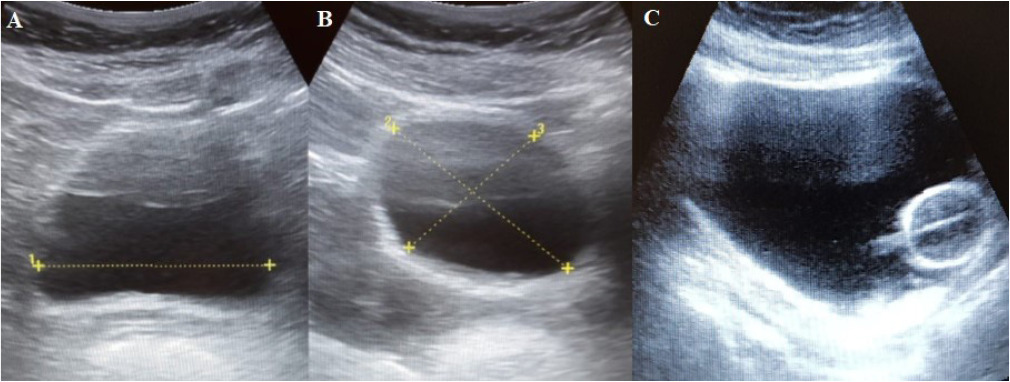
-
12-16-2024
A relação entre gênero, formação educacional e ambiente de aprendizagem com a ansiedade do estudante de enfermagem
Revista Brasileira de Enfermagem. 2024;77(6):e20220615
Abstract
A relação entre gênero, formação educacional e ambiente de aprendizagem com a ansiedade do estudante de enfermagem
Revista Brasileira de Enfermagem. 2024;77(6):e20220615
DOI 10.1590/0034-7167-2022-0615
Views1See moreRESUMEN
Objetivos:
identificar las variables asociadas a la práctica clínica relacionadas con la ansiedad de los estudiantes de enfermería.
Métodos:
se utilizó un diseño descriptivo, cuantitativo, correlacional con las recomendaciones STROBE, EQUATOR. La población fue de 233 estudiantes de enfermería con una muestra de 135 personas. Los datos se recopilaron de marzo a abril de 2022 utilizando instrumentos validados.
Resultados:
la prueba de chi-cuadrado y razón de verosimilitud significativa para género, formación académica y entorno de aprendizaje son superiores a 0.05, por lo que no existe una relación significativa entre las variables y la ansiedad de los estudiantes.
Conclusiones:
los estudiantes necesitan prepararse nuevamente antes de ingresar al campo de la práctica. Investigaciones cualitativas también son necesarias.
-
REVIEW06-10-2022
Self-inflicted violence and suicide in people living with HIV/AIDS: a systematic review
Revista Brasileira de Enfermagem. 2022;75:e20210768
Abstract
REVIEWSelf-inflicted violence and suicide in people living with HIV/AIDS: a systematic review
Revista Brasileira de Enfermagem. 2022;75:e20210768
DOI 10.1590/0034-7167-2021-0768
Views0See moreABSTRACT
Objectives:
to analyze intellectual productions on self-inflicted violence and suicide in people living with HIV/AIDS.
Methods:
a systematic review, carried out between March and April 2021, in the PubMed®/MEDLINE®, Web of Science and LILACS databases, subsidized in the Strengthening the Reporting of Observational Studies in Epidemiology. The period outlined was from 2011 to 2020.
Results:
a total of 199 studies were identified, and 16 composed the final sample, grouped into the categories: Sociodemographic characteristics of victims of self-inflicted violence/suicide and their intervening factors (pointing to young adults, especially homosexuals, with low social support and a history of mental illness or substance abuse as usual victims); Successful measures for suicide prevention/control in people living with HIV/AIDS (suggesting more frequent psychosocial and clinical follow-up of those starting antiretroviral and immunocompromised treatment).
Conclusions:
biopsychosocial follow-up, analysis of sociodemographic profile and intervening factors should be frequent in this population for disease prevention/control.

-
ORIGINAL ARTICLE09-05-2022
Screening for common mental disorder in elderly residents in the countryside: a cross-sectional study
Revista Brasileira de Enfermagem. 2022;75:e20210875
Abstract
ORIGINAL ARTICLEScreening for common mental disorder in elderly residents in the countryside: a cross-sectional study
Revista Brasileira de Enfermagem. 2022;75:e20210875
DOI 10.1590/0034-7167-2021-0875
Views0See moreABSTRACT
Objective:
To estimate the prevalence of common mental disorders and their associated factors in the elderly in a municipality in the countryside of the Brazilian Midwest.
Methods:
Quantitative, observational, cross-sectional approach research, conducted with 218 elderly people.
Results:
The prevalence of the common mental disorder among the elderly was 25.1%; in the univariate analysis, it was higher in females (35.4%), in the age group of 80 years or older (46.1%), brown skin color (30.2%), widowed (42.6%), illiterate (47.6%), and retired (27.6%). In the multiple analysis, the variables female gender (p<0.006), age 80 years or older (p<0.036), dissatisfaction with life (p<0.009), lack of social interaction (p=0.017), and dysfunctional family (p=0.021) remained associated with CMD.
Conclusion:
The results revealed are helpful and contribute to the reinforcement of the need for mental health care in this population extract so growing worldwide.
-
ORIGINAL ARTICLE06-03-2022
Association between falls in older adults and prevention group
Revista Brasileira de Enfermagem. 2022;75:e20200207
Abstract
ORIGINAL ARTICLEAssociation between falls in older adults and prevention group
Revista Brasileira de Enfermagem. 2022;75:e20200207
DOI 10.1590/0034-7167-2020-0207
Views0See moreABSTRACT
Objectives:
to assess the effectiveness of guidelines on fall prevention in a group of older adults in Primary Health Care.
Methods:
a cross-sectional study, carried out with older adults selected by a simple random sample (274; N=1,234). Data covered sociodemographic and socioeconomic variables, marital status, health conditions, factors associated with falls and participation in the prevention group. Student’s t test was used, and dichotomous variables were used by the chi-square test. The project met ethical requirements.
Results:
sample with female profile (61.7%), married, with low education, mean age of 71.69 years. The factors associated with falls identified were female sex, medicalization and participation in the prevention group. There was no protective association between participation in a fall prevention group in older adults and a decrease in the number of falls.
Conclusions:
based on evidence, a personalized intervention during the nursing visit is suggested as a strategy to prevent falls.

-
ORIGINAL ARTICLE03-07-2022
Predictors of frailty in older people users of Primary Health Care
Revista Brasileira de Enfermagem. 2022;75:e20201292
Abstract
ORIGINAL ARTICLEPredictors of frailty in older people users of Primary Health Care
Revista Brasileira de Enfermagem. 2022;75:e20201292
DOI 10.1590/0034-7167-2020-1292
Views0See moreABSTRACT
Objective:
to identify the prevalence and predictors of frailty in older people in Primary Health Care.
Method:
this is a descriptive and correlational study, carried out in a convenience sample of 136 older people in the community. Data were collected through a sociodemographic and clinical questionnaire and frailty phenotype. Student’s t test or U-Mann-Whitney test, chi-square and binary logistic regression were used for data analysis.
Results:
the prevalence of frailty was 26.5% (n=36). Frail individuals had older age (p=0.011), worse self-rated health (p=0.001) and lower physical capacity (p<0.001). In the multivariable regression, it was observed that frail individuals had older age (Odds Ratio=1.111; 95% confidence interval=1.026-1.203) and worse physical capacity (Odds Ratio=0.673; 95% confidence interval=0.508-0.893).
Conclusions:
the prevalence of frailty in older people in Primary Health Care was considerable. Advanced age and worse physical capacity were the most relevant predictors of frailty in the elderly.
-
ORIGINAL ARTICLE04-15-2022
Validation of Questionnaire to Assess the Impact of Dementia on the Family
Revista Brasileira de Enfermagem. 2022;75:e20210232
Abstract
ORIGINAL ARTICLEValidation of Questionnaire to Assess the Impact of Dementia on the Family
Revista Brasileira de Enfermagem. 2022;75:e20210232
DOI 10.1590/0034-7167-2021-0232
Views0See moreABSTRACT
Objective:
To validate a questionnaire to assess the impact of dementia on one of the household members.
Methods:
Methodological study. The instrument was designed based on literature review, expert opinion, and researchers’ experience and then applied to a non-probability convenience sample consisting of 262 family members who live daily with a person with dementia. The construct validity was studied by exploratory factor analysis, principal components method, with varimax rotation of the items.
Results:
An instrument with 30 items was obtained, distributed in four dimensions: “Emotional dimension,” “Economic dimension,” “Family relations dimension,” and “Support-seeking dimension.” Factor analysis revealed a total explained variance of 54.96% and a total Cronbach’s alpha of .899.
Conclusions:
The instrument presents high internal consistency, grouped into four dimensions, all closely related to the family’s adaptation to the onset of dementia in one of its members.
-
ORIGINAL ARTICLE03-07-2022
Is self-esteem associated with the elderly person’s quality of life?
Revista Brasileira de Enfermagem. 2022;75:e20210388
Abstract
ORIGINAL ARTICLEIs self-esteem associated with the elderly person’s quality of life?
Revista Brasileira de Enfermagem. 2022;75:e20210388
DOI 10.1590/0034-7167-2021-0388
Views0See moreABSTRACT
Objective:
To analyze the association between self-esteem and quality of life in the elderly.
Methods:
Cross-sectional web survey developed with 519 elderly people. Participants filled out three data collection instruments developed on the Google Forms platform and widely disseminated through all of Brazil. Fisher’s exact test, Mann-Whitney, Pearson correlation, and linear regression with 95% confidence interval were used.
Results:
Self-esteem was associated with all quality-of-life facets: sensory skills [β= 1.307; p<0.001]; autonomy [β= 2.101; p<0.001]; past, present, and future activities [β= 2.486; p<0.001]; social presence [β= 2.547; p<0.001]; death and dying [β= 2.175; p<0.001]; and intimacy [β=2.378; p<0.001].
Conclusion:
There is a positive and statistically significant association between self-esteem and quality of life in the elderly. We therefore suggest the development of local policies capable of raising this age groups’ self-esteem and reaffirming aging as a new possibility for discoveries and pleasure.
-
EXPERIENCE REPORT10-24-2022
Nursing process for elderly women susceptible to falls from the perspective of the Pender’s Model
Revista Brasileira de Enfermagem. 2022;75:e20210913
Abstract
EXPERIENCE REPORTNursing process for elderly women susceptible to falls from the perspective of the Pender’s Model
Revista Brasileira de Enfermagem. 2022;75:e20210913
DOI 10.1590/0034-7167-2021-0913
Views0See moreABSTRACT
Objectives:
to describe the strategy of applying the nursing process guided by Pender’s Health Promotion Model to elderly women susceptible to falls with a view to promoting a self-efficacy behavior for fall prevention.
Methods:
application of the nursing process to eleven elderly women who had already experienced falls, living in a neighborhood in the outskirts of Belem, state of Pará, which involved interviews to obtain their nursing history and group meetings using the focus group technique to develop the other phases of the nursing process: nursing diagnosis, nursing interventions, and nursing assessment.
Results:
despite the risk factors for falls, the intervention model adopted in this study allowed elderly women to enhance their self-efficacy.
Final Considerations:
the model proved to be suitable for the participation of elderly women in actions to build fall prevention behaviors, with a view to healthier lifestyles.

-
ORIGINAL ARTICLE10-24-2022
Factors associated with symptoms of physical and emotional burden in informal caregivers of the elderly
Revista Brasileira de Enfermagem. 2022;75:e20210927
Abstract
ORIGINAL ARTICLEFactors associated with symptoms of physical and emotional burden in informal caregivers of the elderly
Revista Brasileira de Enfermagem. 2022;75:e20210927
DOI 10.1590/0034-7167-2021-0927
Views1See moreABSTRACT
Objectives:
to analyze the personal and work-related burden factors associated with physical and emotional symptoms of informal caregivers of the elderly.
Methods:
cross-sectional study conducted with 121 informal caregivers and 121 seniors who received care, assessed individually for the risk of: physical overload, musculoskeletal symptoms, Self-Reporting Questionnaire, effort perception, and Katz index.
Results:
a greater perception of effort raises up to 3.3 times the chances of presenting symptoms of pain in the spine region (p=0.01), and lower functional capacity of the elderly increases up to 1.3 times the chances of presenting pain symptoms in the spine region (p=0.02). The symptoms of emotional overload were associated with the caregiver’s low income (p=0.02).
Conclusions:
the perception of effort, dependence of the elderly, caregiver’s age, and symptoms of emotional overload are involved with caregivers’ symptoms of physical overload, and low income, with emotional overload.
-
ORIGINAL ARTICLE08-19-2019
Mobile application for the teaching of the International Classification for Nursing Practice
Revista Brasileira de Enfermagem. 2019;72(4):1020-1027
Abstract
ORIGINAL ARTICLEMobile application for the teaching of the International Classification for Nursing Practice
Revista Brasileira de Enfermagem. 2019;72(4):1020-1027
DOI 10.1590/0034-7167-2018-0751
Views0See moreABSTRACT
Objective:
Developing a mobile application for the teaching of the International Classification for Nursing Practice.
Methods:
Methodological applied research for technological production, performed in three phases of the contextualized instructional design model: analysis, design and development.
Results:
The application has an initial screen, which provides information about the team and its purpose. Then, four moblets are listed, including presentation, user’s guide consisting of five modules, educational games and five clinical cases. The references on which the application was based are also presented.
Final considerations:
It was possible to develop an application with the potential to promote the knowledge of nursing students and professionals about this classification system.
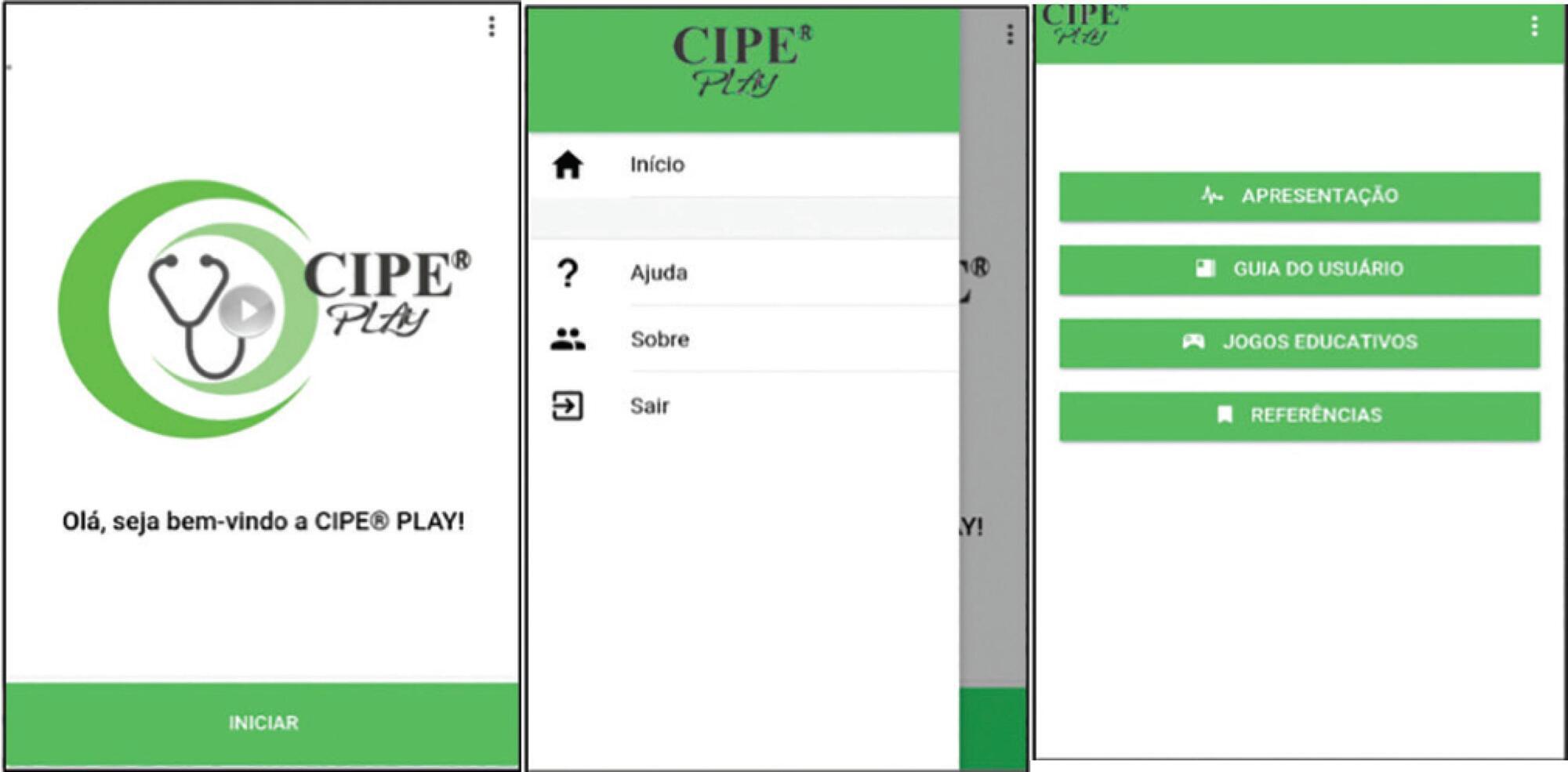
-
ORIGINAL ARTICLE08-14-2020
Education to prevent ventilator-associated pneumonia in intensive care unit
Revista Brasileira de Enfermagem. 2020;73(6):e20190477
Abstract
ORIGINAL ARTICLEEducation to prevent ventilator-associated pneumonia in intensive care unit
Revista Brasileira de Enfermagem. 2020;73(6):e20190477
DOI 10.1590/0034-7167-2019-0477
Views0INTRODUCTIONVentilator-Associated Pneumonia (VAP) is one of the complications related to the care of patients hospitalized in the Intensive Care Unit (ICU), which, according to consulted authors, exceeds the mortality rates of other Healthcare Related Infections (HRI). VAP is the second most frequent infection in patients admitted to the ICU, as well as the most prevalent […]See more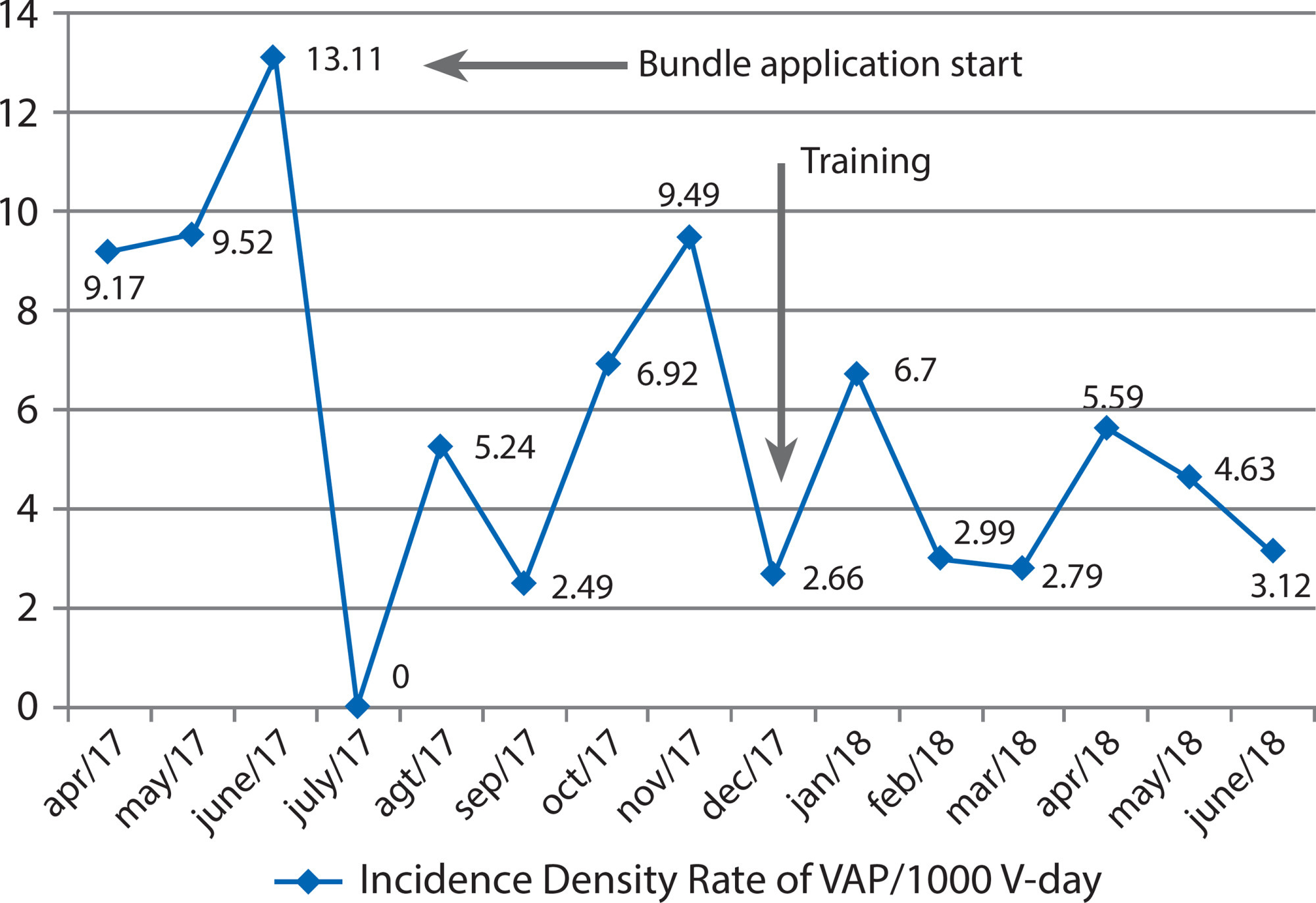
-
08-19-2019
Degree in Nursing: education through problem-based learning
Revista Brasileira de Enfermagem. 2019;72(4):1071-1077
Abstract
Degree in Nursing: education through problem-based learning
Revista Brasileira de Enfermagem. 2019;72(4):1071-1077
DOI 10.1590/0034-7167-2018-0298
Views0See moreABSTRACT
Objective:
To describe how undergraduate courses in Nursing are using the problem-based learning (PBL).
Method:
Integrative literature review, from searches in the databases Education Resources Information Center (ERIC), Latin American and Caribbean Health Sciences Literature (Lilacs), and PubMed, from 2010 to 2015. 36 articles were analyzed.
Results:
A teaching method used in all continents, the PBL enables improvement of the critical thinking, autonomy, motivation for learning, active search attitude, ability to work in teams, and problem-solving. Difficulties and challenges relate to the training of students and teachers to understand the principles of the method.
Final considerations:
The benefits of PBL coincide with the needs of nursing training, but its applicability demands constant review in seeking to develop the skills necessary for this training.
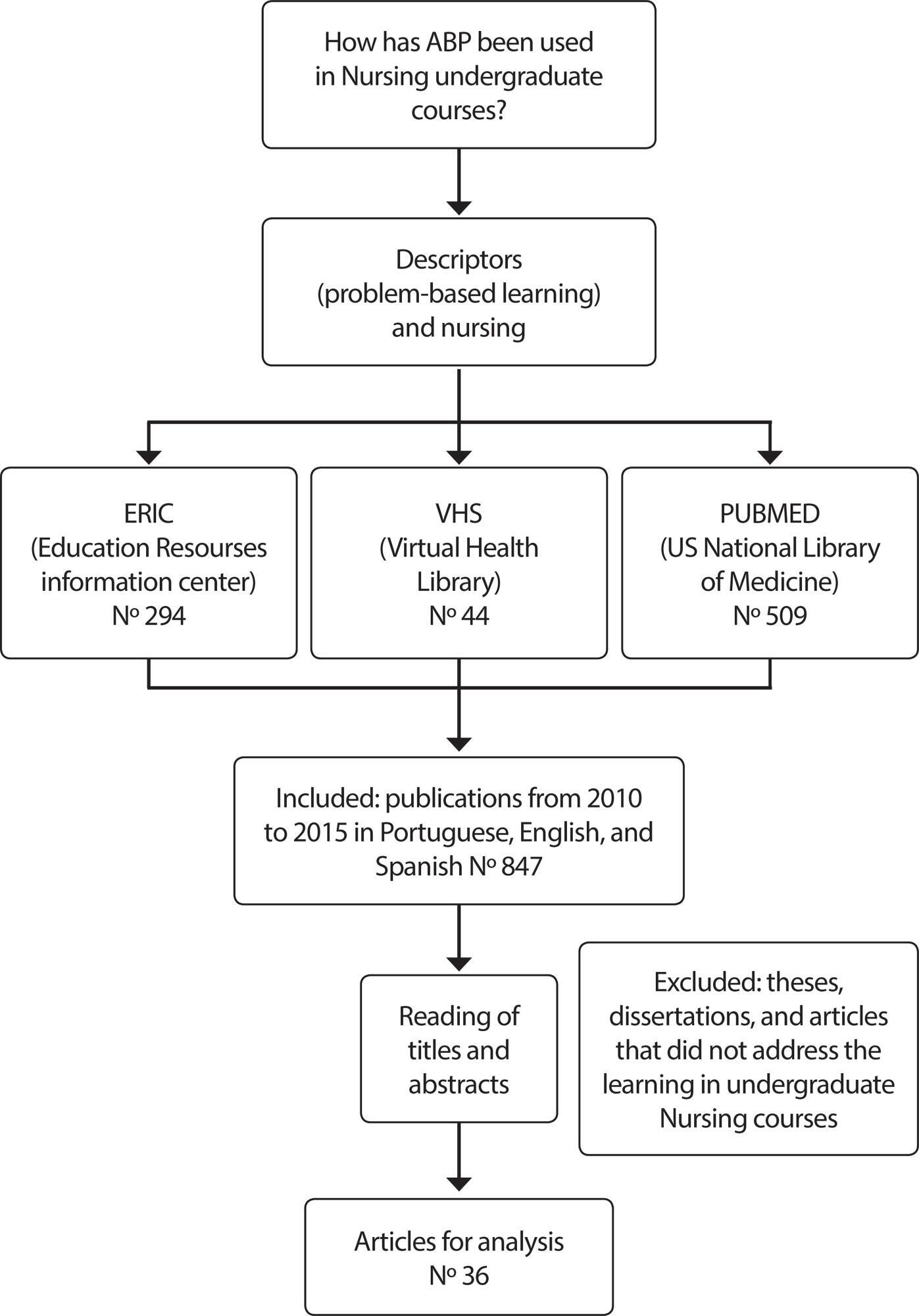
-
ORIGINAL ARTICLE12-13-2019
Mobile health technology for gestational care: evaluation of the GestAção’s app
Revista Brasileira de Enfermagem. 2019;72:266-273
Abstract
ORIGINAL ARTICLEMobile health technology for gestational care: evaluation of the GestAção’s app
Revista Brasileira de Enfermagem. 2019;72:266-273
DOI 10.1590/0034-7167-2018-0641
Views0See moreABSTRACT
Objective:
to evaluate the GestAção application, based on the experience of pregnant women use.
Method:
an evaluative, applied, methodological, quantitative-qualitative study. This tool was evaluated by 13 pregnant women through questionnaires for sociodemographic profile characterization and Likert scale use to calculate Content Validity Index (CVI); and semi-structured interview, with analysis based on Semiotics.
Results:
the study evidenced a significant level of satisfaction of pregnant women with the application use, considering the objectives (CVI = 0.92), structure and presentation (CVI = 0.86), and relevance (CVI = 0.92).
Final considerations:
the GestAção application obtained an overall CVI of 0.90, evidencing it as a facilitating and supporting technology in the empowerment of pregnant women interested in obtaining knowledge about pregnancy. It has been proved to be a powerful tool to qualify good practices in nursing consultation.
-
REFLECTION06-29-2020
Children’s (in)visibility in social vulnerability and the impact of the novel coronavirus (COVID-19)
Revista Brasileira de Enfermagem. 2020;73:e20200302
Abstract
REFLECTIONChildren’s (in)visibility in social vulnerability and the impact of the novel coronavirus (COVID-19)
Revista Brasileira de Enfermagem. 2020;73:e20200302
DOI 10.1590/0034-7167-2020-0302
Views0See moreABSTRACT
Objective:
To examine the impact of the infection by the novel coronavirus on Brazilian children in situation of social vulnerability based on the Millennium Sustainable Development Goals.
Method:
Reflective study based on discursive formulation in three aspects: principles of the objectives and goals for the millennium sustainable development; impact of the pandemic on the health of children and their families living in social vulnerability; and the role of pediatric nursing in the care provided – limits and challenges.
Results:
In January 2020, the news of COVID 19 is released as a pandemic. In Brazil, children and families are still without access to basic rights, thereby increasing their risks of social vulnerability because of the quarantine. The nursing field has an important role in monitoring children and their families, offering guidance in search for solutions and preventing contamination.
Conclusion:
There are still challenges to be overcome by the children and their families in situations of vulnerability against COVID-19.
-
ORIGINAL ARTICLE07-10-2020
Profile of nursing students: quality of life, sleep and eating habits
Revista Brasileira de Enfermagem. 2020;73:e20190365
Abstract
ORIGINAL ARTICLEProfile of nursing students: quality of life, sleep and eating habits
Revista Brasileira de Enfermagem. 2020;73:e20190365
DOI 10.1590/0034-7167-2019-0365
Views0See moreABSTRACT
Objective:
to profile and analyze sleep quality, quality of life and eating habits of nursing students.
Methods:
a cross-sectional, comparative and correlational study with the following variables: sociodemographic characteristics, Pittsburgh sleep quality index, quality of life and eating habits. One hundred ninety-five students participated in the study.
Results:
participants were on average 24 years old. Results showed that females were prevalent (87.1%); 71.0% of the students had poor sleep quality; 98.9% used electronic devices before bedtime. Self-perception of quality of life was indifferent (38.3%), and self-perception of general health, 36.9% expressed satisfaction. Among the participants, 45.13% consumed one portion of fruit and 40.66% two to three portions of vegetables daily.
Conclusion:
the study allowed the profile of these students, sedentary, overweight and poor sleep quality young students who studied and worked.
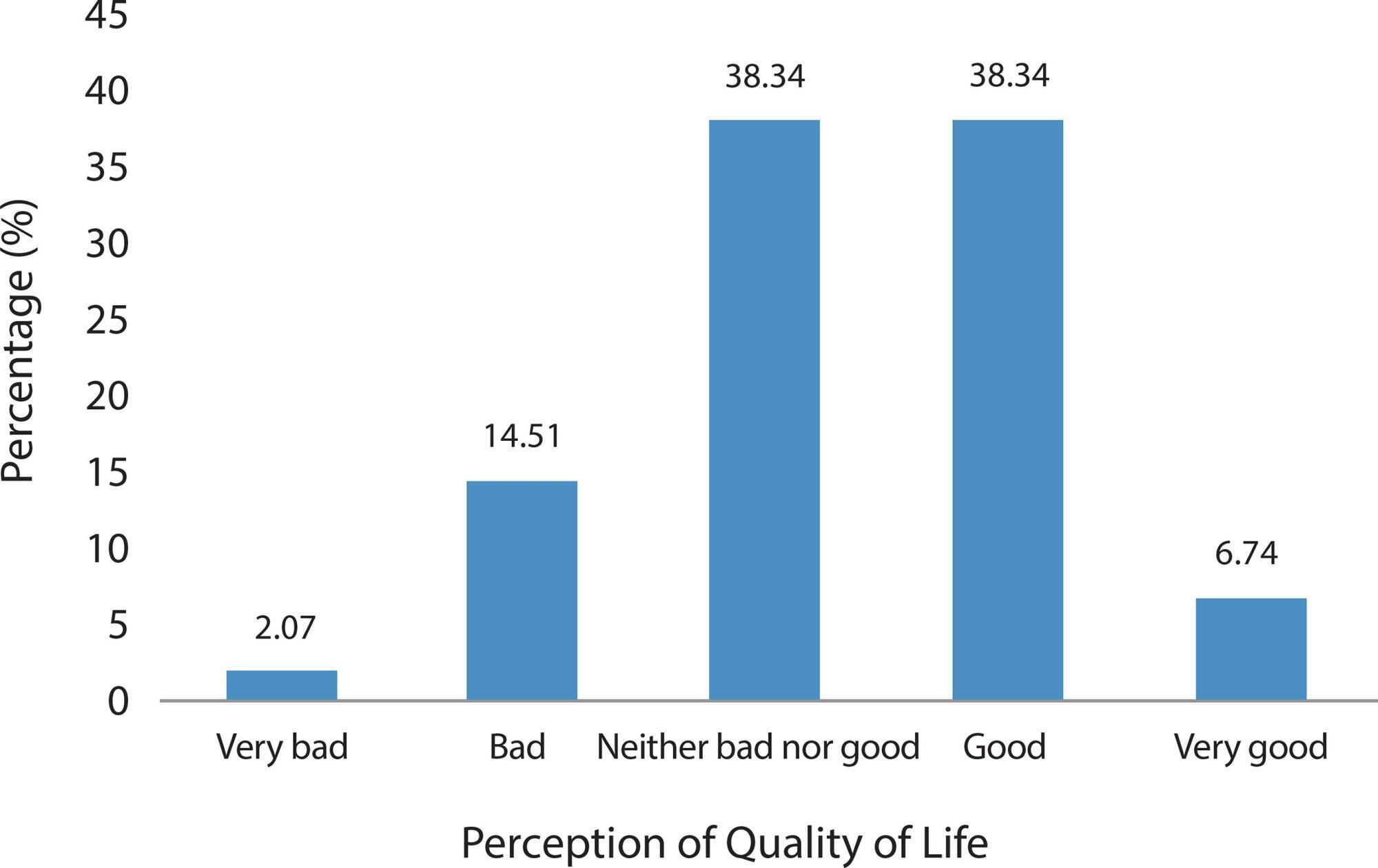
-
ORIGINAL ARTICLE06-09-2020
Stress of nursing professionals working in pre-hospital care
Revista Brasileira de Enfermagem. 2020;73(2):e20180660
Abstract
ORIGINAL ARTICLEStress of nursing professionals working in pre-hospital care
Revista Brasileira de Enfermagem. 2020;73(2):e20180660
DOI 10.1590/0034-7167-2018-0660
Views0See moreABSTRACT
Objectives:
To analyze the factors related to the occupational stress of a Mobile Emergency Care Service (Samu) nursing team.
Methods:
This is a descriptive study, with a quantitative approach, performed with nursing professionals from Samu service of a city of Pernambuco. A sociodemographic questionnaire and the Lipp’s Stress Symptom Inventory were used.
Results:
The participants presenting stress (24.6%) were classified in the phases: resistance (19.7%), exhaustion (4.4%) and near exhaustion (0.5%). It was also observed an association of stress level with the following factors: gender, sleep quality, professional autonomy restriction, emotional exhaustion with work performed and work in inadequate or unhealthy physical facilities.
Conclusions:
Although showing low occurrence of stress, this study pointed out the profile that presents the highest risk of developing occupational stress, through the factors significantly associated with stress in the studied population.
-
ORIGINAL ARTICLE07-10-2020
Nursing appeals on social media in times of coronavirus
Revista Brasileira de Enfermagem. 2020;73:e20200225
Abstract
ORIGINAL ARTICLENursing appeals on social media in times of coronavirus
Revista Brasileira de Enfermagem. 2020;73:e20200225
DOI 10.1590/0034-7167-2020-0225
Views0See moreABSTRACT
Objective:
to know and analyze the nursing appeals on social media during the COVID-19 pandemic.
Method:
it is a documentary, qualitative, descriptive, and exploratory research with data collected in publications in two social media. Two hundred ninety-five publications of nursing professionals published on Twitter and Instagram between March 11 and 20, 2020 were submitted to content analysis using ATLAS.ti resources.
Results:
four thematic categories emerged: #stayathome, #whereismyPPE, #nowweareheroes, #nothingnewinthefrontline, according to frequency of communications. The appeals show a relationship with the social relevance of nursing professional work and with the conditions required for its exercise.
Final considerations:
old and new challenges of the profession were placed on the agenda in social media, especially related to the workforce and instruments of labor. These speeches can serve as a foundation for policies to improve working conditions and promote appreciation of the profession.

Search
Search in:
Nuvem de Tags
Adolescente (85) Atenção Primária à Saúde (239) COVID-19 (91) Criança (91) Cuidados de Enfermagem (269) Educação em Enfermagem (151) Educação em Saúde (139) Enfermagem (930) Enfermagem Pediátrica (86) Estudantes de Enfermagem (77) Estudos de Validação (131) Família (87) Idoso (208) Promoção da Saúde (99) Qualidade de Vida (104) Saúde do Trabalhador (86) Saúde Mental (145) Saúde Pública (82) Segurança do Paciente (150) Tecnologia Educacional (100)



